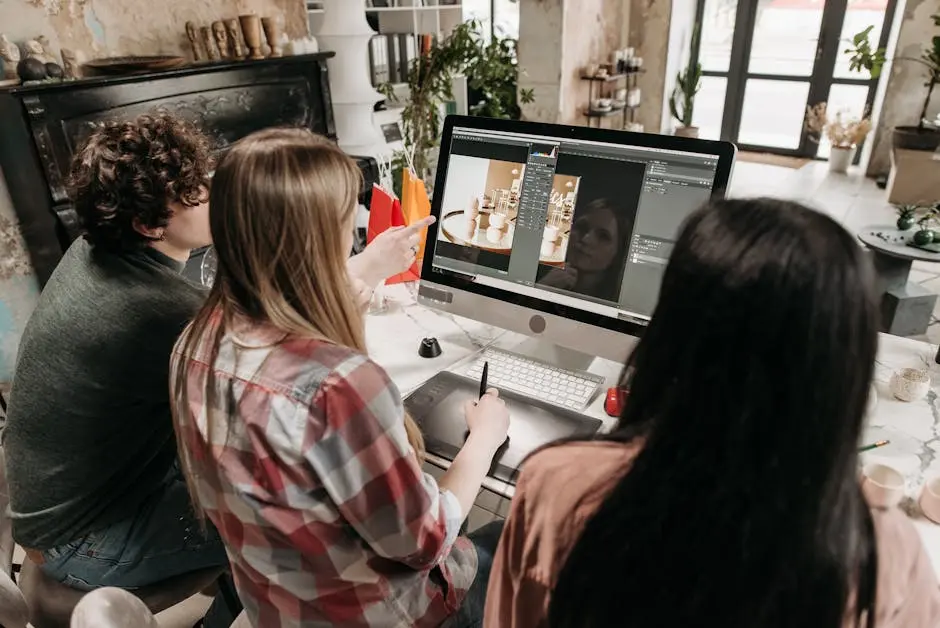The Art of Seamless Collaboration Among Creative Teams

In today's fast-paced, creative-driven world, seamless collaboration among creative teams is more crucial than ever. Whether you're working on a design project, launching a new marketing campaign, or crafting a compelling story, the ability to work well together can make or break the outcome. In this blog, we'll explore the essential elements that foster a highly collaborative environment, paving the way for creativity and innovation to flourish.
The Importance of Clear Communication
Clear and open communication is the backbone of successful collaboration. It's vital to ensure that everyone on the team is on the same page, understands their role, and has a clear vision of the project objectives. Regular check-ins, open forums for discussion, and accessible communication channels can help maintain this clarity.
Establishing a common language free from jargon allows for smoother interactions and fewer misinterpretations. Tools such as Microsoft Teams offer versatile platforms for real-time conversations, helping teams stay informed and making the decision-making process seamless. Whether it's through shared design libraries or documentation platforms, leveraging the right tools ensures everyone has access to the same information, fostering a more cohesive team environment.
Building Trust Within Creative Teams
Trust is a foundational element of effective collaboration. When team members trust one another, they are more likely to share ideas freely, take creative risks, and support each other's efforts. Building this trust requires time, consistency, and a commitment to recognizing and valuing each person's contributions.
To cultivate trust, it's essential to create an inclusive atmosphere where team members feel comfortable expressing themselves. Encourage open dialogue and transparency, allowing team members to voice concerns or offer suggestions without fear of judgment. Acknowledging each individual's strengths and contributions helps reinforce trust. Team-building activities and regular feedback sessions can further solidify relationships, making it easier to navigate challenges and innovate collaboratively.
Leveraging Diverse Perspectives
Diversity in thought, experience, and background can greatly enhance the collaborative process. Encouraging team members to bring their unique perspectives to the table leads to innovative solutions and a richer creative process. This diversity should be actively sought and celebrated within creative teams.
In a creative setting, diverse perspectives can spark fresh ideas that may have otherwise gone unnoticed. By encouraging diversity, teams can benefit from varying approaches and problem-solving techniques, leading to more well-rounded and comprehensive solutions. Recognizing the value of different viewpoints fosters an environment of mutual respect and appreciation, which is crucial for collaborative success.
Teams can leverage diversity by incorporating a variety of disciplines and expertise in their projects, such as combining design with development insights, similar to the strategies discussed in the ELISH Blog. This approach can lead to a more innovative and effective workflow, harnessing the full potential of each team member's skills and backgrounds.
Utilizing the Right Tools for Collaboration
The right tools can make all the difference in facilitating seamless collaboration. From project management software to digital whiteboards and messaging platforms, technology can streamline communication, keep tasks organized, and help teams stay connected regardless of physical location.
Platforms such as Asana and Trello offer comprehensive solutions for task management, helping teams allocate resources efficiently and track project progress. Digital tools like Figma enable real-time collaboration, allowing multiple users to work simultaneously without the hassle of version conflicts. Implementing these technologies can elevate your team's capabilities, making remote work feel as connected and productive as sharing an office space.
The Role of Feedback in Creative Processes
Feedback is an essential part of any creative process. Establishing a culture where feedback is constructive, timely, and respectful can help team members grow and improve. Encouraging regular feedback loops ensures that ideas are continuously refined and developed to their fullest potential.
In addition to enhancing personal growth, feedback plays a pivotal role in the evolution of a project. By fostering a culture of open communication and continuous improvement, teams can avoid potential misunderstandings and ensure that everyone is aligned with the project's goals. Implementing effective feedback mechanisms, such as structured critique sessions or routine check-ins, can significantly enhance the quality of the output.
To further refine the feedback process, teams may consider leveraging digital tools that foster collaboration and communication. Using applications like Microsoft Teams can streamline discussions and enable smoother interactions, allowing teams to focus on refining and elevating their creative endeavors.
Fostering a Culture of Seamless Collaboration
Seamless collaboration among creative teams is not just a nice-to-have; it's a necessity for cultivating innovation and achieving outstanding results. By understanding and implementing the key elements of successful collaboration—clear communication, building trust, leveraging diversity, using the right tools, and fostering a culture of continuous feedback—your team can thrive creatively, reaching new heights in your endeavors. Embrace these practices, and watch as your team's collaborative efforts transform ideas into reality.
Roam: Run your design business, not just your projects. Intuitive business management tools for graphic designers


.png)





